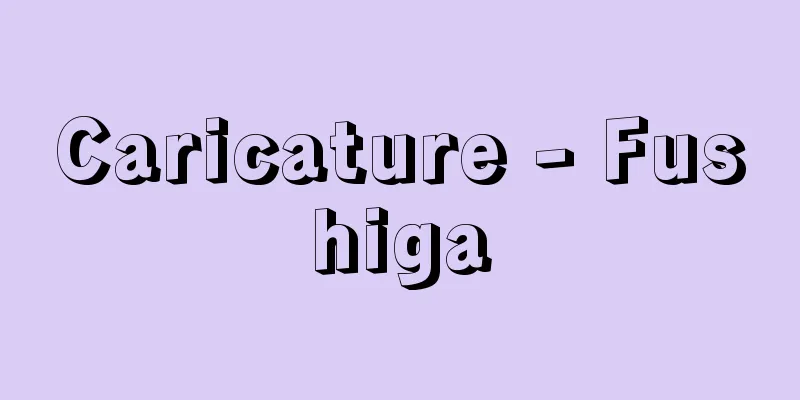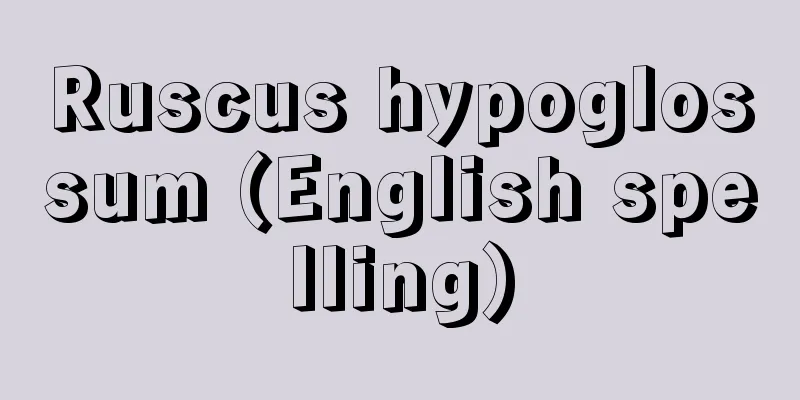Caricature - Fushiga

|
A genre of manga. If we were to define manga, we could say that it is paintings that contain elements of "satire" or "play." Paintings that contain both elements in a good balance are very interesting as manga. Paintings with a strong element of "play" are generally called caricatures, and similarly, those with a strong element of "satire" are called caricatures. Human society is full of irrationality and contradictions, and everyone feels rebellious toward them. Cartoons are pictorial expressions of this resistance and critical spirit. Therefore, the target of satire is human beings, and even cartoons that use objects or animals to satirize have a hidden criticism of human beings behind them. Cartoons come in a wide variety of styles, from those that satirize human nature itself to those that satirize peers or the surrounding society, and even those that satirize the highest authority in a country. Caricatures have existed for as long as humans have known how to draw. Naturally, there were caricatures drawn on dirt or sand that exaggerated the physical flaws of others. After the invention of paper, brushes, ink, pigments, etc., countless caricatures were produced. Ancient examples include decorative paintings on Greek vases, pitchers, and jars, and the Choju Jinbutsu Giga (Cartoon of Animals and Animals) from Kozan-ji Temple in Kyoto. As printing techniques such as woodblock prints and copperplate prints developed, caricatures began to be drawn with the aim of being shown to an unspecified number of people. Examples include the Toba ehon (Toba picture book) from the mid-Edo period, and works by Caro, Hogarth, Rowlandson, Goya, and others from the 17th century onwards. The invention of lithography at the end of the 18th century revolutionized the history of cartoons. Due to its speed and ability to produce large quantities, cartoons began to appear in journalism. They began to incorporate political statements and educational and propaganda content, with a new focus on current issues. The propaganda campaign using cartoons during the Paris Commune is well known, and that spirit continues to live on today as the main function of cartoons. Some argue that "caricature" is the same as "satirical illustration," but it can be said that "caricature" is a word closer to "manga," which contains elements of both caricature and satire. [Isao Shimizu] "The Art of Satire" by M. Hodjat, translated by Tsunehito Yamada (1970, Heibonsha)" ▽ "The Painter of Resistance" by Keiichi Suyama (1971, Zokeisha) ▽ "A Journey to the World of Mockery Pictures - The Satire Manga Library" by Isao Shimizu (1982, Chuokoron-Shinsha) [References] |Source: Shogakukan Encyclopedia Nipponica About Encyclopedia Nipponica Information | Legend |
|
漫画の一分野。漫画をあえて定義すると、「風刺」の要素あるいは「遊び」の要素を含んだ絵画といえる。両要素がバランスよく含まれた絵画は漫画として非常におもしろい。「遊び」の要素の強いものは一般的に戯画とよばれ、同様に「風刺」の要素の強いものは風刺画とよばれる。 人間社会には不合理や矛盾が満ちあふれているから、それに対して反発する気持ちはだれにでもある。そうした抵抗心・批判精神を絵として表現したものが風刺画である。したがって風刺の対象とするものは人間であり、事物や動物などを使って風刺するものも、その裏に人間批判が隠されている。風刺画は、人間性そのものを風刺するものから、仲間や周囲の社会を風刺するもの、さらには一国の最高権力者を風刺するものまで、幅が広い。 人間が絵を描くことを知った時点から風刺画は存在したと思われる。土や砂の上に他人の容姿の欠点を誇張して描く風刺画などは当然存在したであろう。紙、筆、墨、顔料などが発明されてからは風刺画は無数に描き出された。古代のものでは、ギリシアの壺(つぼ)、水差し、甕(かめ)などに描かれた飾り画や、京都・高山寺(こうざんじ)の『鳥獣人物戯画』などがある。さらに木版画、銅版画などの版画技術が発達してくると、不特定多数の人々に見せることを目的として描かれるようになる。江戸中期の「鳥羽(とば)絵本」、17世紀以後のカロ、ホガース、ローランドソン、ゴヤらの作品がその例である。 風刺画の歴史に革命をもたらしたのは18世紀末の石版画技術の発明である。そのスピーディーで大量に制作できる特性によって、ジャーナリズムのなかに風刺画が登場してくる。新たに時局問題をテーマにして政治的主張や教育宣伝的内容を盛り込むようになる。パリ・コミューン期の風刺画使用の宣伝戦はよく知られており、その精神は今日でも漫画の主要な機能として生き続けている。 なお、「風刺画」とカリカチュアと同一視する主張もあるが、「カリカチュア」は戯画・風刺画の両要素を含む「漫画」に近いことばだといえる。 [清水 勲] 『M・ホジャート著、山田恒人訳『諷刺の芸術』(1970・平凡社)』▽『須山計一著『抵抗の画家』(1971・造形社)』▽『清水勲著『嘲笑絵わらいえ世界への旅――諷刺の漫画館』(1982・中央公論社)』 [参照項目] |出典 小学館 日本大百科全書(ニッポニカ)日本大百科全書(ニッポニカ)について 情報 | 凡例 |
Recommend
Dispatch of troops to Shandong
Japan's armed intervention against the Chines...
Genus Asteraceae - Asteraceae
…A general term for the genus Nierembergia . A pe...
Garnett, J.
… Taylor was a Manchester cotton manufacturer and...
A bad example - Hanmenkyoushi
Someone who should be a bad example to learn from....
Electric washing machine
A machine that uses an electric motor to wash clot...
Manipulator - manipulator (English spelling)
A remote-controlled machine that is designed to h...
Oxford [town] - Oxford
An old town in Ogi County in central Saga Prefectu...
hollow sticking knife
…Blood is composed of 60-70% plasma and 30-40% re...
Covering space - Hifukukukan (English spelling) covering space
When we need to consider the space X in multiple o...
ne bis in idem (English spelling) nebisinidem
...the principle that once a person has been pros...
Gyougetsubou
[Born] Bun'ei 2 (1265) [Died] November 8, 1328...
Bâkî, Mahmud Abdülbâkî
Born: 1526. Istanbul Died: April 7, 1600. Court po...
felsite
…Felsic volcanic rocks include dacite, rhyolite, ...
Emperor Keitai
Year of birth: Unknown The 26th emperor (great kin...
Commonwealth of Kentucky
…A state in the southern United States. Its offic...









